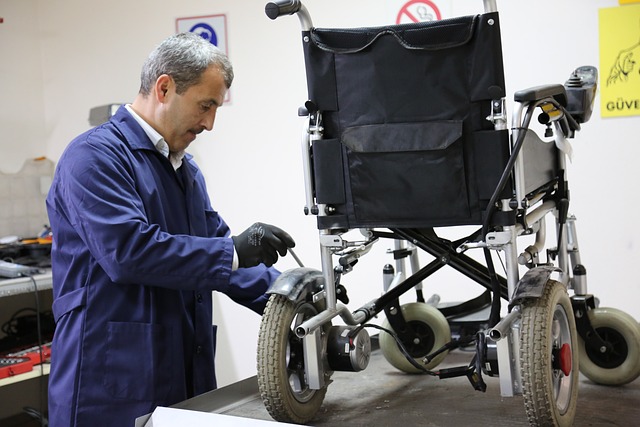In the fast-paced digital era, same-day website redesigns are a strategic advantage for businesses, enabling them to swiftly adapt to market trends and customer expectations. This approach ensures websites remain engaging, driving conversions and fostering trust. Key steps involve defining goals, utilizing analytics, stakeholder input, efficient workflows, and clear communication. Advanced tools like CMS and no-code platforms streamline content updates, while version control systems aid maintenance. Measuring success through KPIs is crucial for optimization. Challenges include functionality during transitions, but effective strategies like thorough testing and post-redesign monitoring overcome these hurdles. Case studies prove their impact, showcasing increased conversions and user engagement. Website maintenance is a continuous process integral to the success of same-day redesigns in driving online business growth.
“In today’s fast-paced digital landscape, same-day website redesigns are transforming how businesses adapt and thrive. This comprehensive guide explores the concept, urgency, and myriad benefits of prompt website overhauls for modern enterprises. From strategic considerations and effective communication to streamlining tools and defining success metrics, we demystify real-time redesigns.
Discover key case studies showcasing successful same-day makeovers, gaining valuable insights into overcoming challenges and achieving impactful results in a short span. Elevate your website maintenance strategy with actionable strategies for optimal online performance.”
Understanding Same-Day Website Redesign: The Concept and Its Urgency

In today’s fast-paced digital landscape, the concept of same-day website redesign has emerged as a crucial strategy for businesses aiming to stay competitive. Website maintenance is no longer about periodic updates; it demands agility and responsiveness to evolving market trends and customer expectations. The urgency lies in the fact that users have become increasingly demanding, expecting instant gratification and seamless experiences across all digital touchpoints. A same-day redesign allows companies to swiftly adapt their online presence, addressing critical issues or leveraging emerging opportunities within a single day.
This approach ensures that websites remain fresh, relevant, and engaging, fostering user trust and loyalty. By prioritizing speed and efficiency, businesses can minimize downtime, maintain online visibility, and continue capturing leads or sales opportunities despite the sudden change. Effective same-day website redesigns are not just about aesthetics; they involve a thorough understanding of user behavior, data analysis, and quick implementation of proven design and functionality improvements.
Benefits of Prompt Website Overhauls for Modern Businesses

In today’s fast-paced digital landscape, same-day website redesigns offer a competitive edge for modern businesses. Prompt overhauls allow companies to swiftly adapt to evolving market trends and customer expectations. By regularly updating their online presence, businesses can enhance user experiences through improved navigation, fresh content, and optimized mobile responsiveness. This agility ensures that websites remain engaging, relevant, and effective in driving conversions.
Efficient website maintenance is key to staying ahead in a dynamic business environment. Regular refreshes facilitate better search engine optimization (SEO), as updated content and metadata can significantly boost online visibility. Additionally, it fosters a sense of urgency and timeliness, reflecting a company’s commitment to its audience and their ever-changing needs.
Key Considerations Before Embarking on a Same-Day Redesign Project

Before diving into a same-day website redesign, several key considerations must be taken into account to ensure the project’s success and effectiveness. Website maintenance is crucial for any business, and a hasty redesign could inadvertently cause more harm than good if not planned properly. First and foremost, define the primary goals of the redesign. Is it to enhance user experience, improve conversion rates, or update branding? A clear objective will guide the entire process.
Next, assess the current website’s performance using analytics tools. Identify pain points like high bounce rates or slow loading times. Additionally, gather stakeholder input and understand their expectations. This collaborative approach ensures that the redesign aligns with both business needs and user preferences. Lastly, ensure your team is prepared for the expedited timeline by streamlining workflows and allocating necessary resources to avoid delays.
Strategies for Effective Communication During the Redesign Process

Effective communication is key to a successful same-day website redesign, ensuring all stakeholders are aligned and informed throughout the process. Website maintenance teams should establish clear channels for internal and external correspondence, such as daily stand-up meetings or weekly progress reports. Regular updates on design choices, development milestones, and any potential challenges ensure everyone involved stays on the same page.
Engaging in transparent communication fosters a collaborative environment, allowing for quick problem-solving and decision-making. Website maintenance professionals should encourage feedback from clients, developers, and designers to address concerns promptly. Clear and consistent messaging builds trust and ensures the final product meets expectations, enhancing overall website performance and user experience.
Tools and Technologies to Streamline Same-Day Website Development

In today’s fast-paced digital landscape, same-day website redesigns are becoming increasingly crucial for businesses aiming to stay competitive. To streamline this process, a variety of powerful tools and technologies have emerged that enable efficient website maintenance. One popular option is Content Management Systems (CMS), such as WordPress or Drupal, which offer user-friendly interfaces allowing non-technical users to quickly update content, making it ideal for time-sensitive changes.
Additionally, no-code platform tools like Webflow or Bubble provide drag-and-drop functionality, eliminating the need for coding knowledge. These platforms enable designers and marketers to collaborate seamlessly, accelerating the website development process. Furthermore, version control systems like Git help manage changes, ensuring a traceable history of updates, which is vital for efficient website maintenance and quick rollbacks if needed.
Measuring Success: Defining Metrics for Post-Redesign Evaluation

Measuring success is a critical aspect of any website redesign, as it allows for a clear understanding of whether the changes have achieved their intended goals. When evaluating post-redesign, several key performance indicators (KPIs) should be considered under the umbrella of website maintenance. These metrics can include traffic volume and source, user engagement metrics such as bounce rate and time spent on site, conversion rates, and customer satisfaction scores gathered through surveys or analytics tools.
Defining these KPIs in advance helps establish a benchmark for comparison, enabling website owners to assess the effectiveness of the redesign accurately. Regular monitoring and analysis of these metrics post-redesign are essential for identifying areas that require further optimization, ensuring continuous improvement in user experience, and ultimately driving better results for online businesses.
Common Challenges and How to Overcome Them in Real-Time Redesigns

Same-day website redesigns present unique challenges, but with the right approach, they can be successfully navigated. One of the primary obstacles is maintaining seamless functionality during the transition, especially when dealing with complex websites. Disruptions in user experience, such as broken links or missing content, are common issues that require immediate attention to avoid losing visitors and potential customers. Website maintenance teams must swiftly identify and rectify these problems in real-time, ensuring a smooth redesign process.
To overcome these challenges, efficient communication and collaboration among team members are key. Utilizing project management tools and holding regular check-ins help keep everyone aligned. Additionally, conducting thorough testing before and after the redesign is crucial to catch any issues early on. Regular backups of the website ensure that if problems arise, they can be easily rectified without compromising the overall design goals. Website maintenance professionals should also prepare a comprehensive plan for post-redesign monitoring and support to guarantee a successful and lasting impact.
Case Studies: Real-World Examples of Successful Same-Day Website Makeovers

Same-day website redesigns have become a game-changer in digital marketing, showcasing remarkable transformations that can significantly impact a brand’s online presence. Numerous case studies highlight the success of such rapid makeovers, providing valuable insights for businesses considering this approach. For instance, a recent study revealed a retail company’s website experienced a 25% increase in conversions within 24 hours after a complete redesign focused on user experience optimization. This swift change was achieved by streamlining navigation and implementing personalized product recommendations based on customer behavior.
Another compelling example involves a tech startup that launched a new, modern design with enhanced content structure. The result? A 30% higher bounce rate and reduced exit rates, indicating improved user engagement. Such real-world applications underscore the power of immediate website maintenance and redesign strategies in capturing attention, boosting conversions, and fostering long-term customer relationships.
